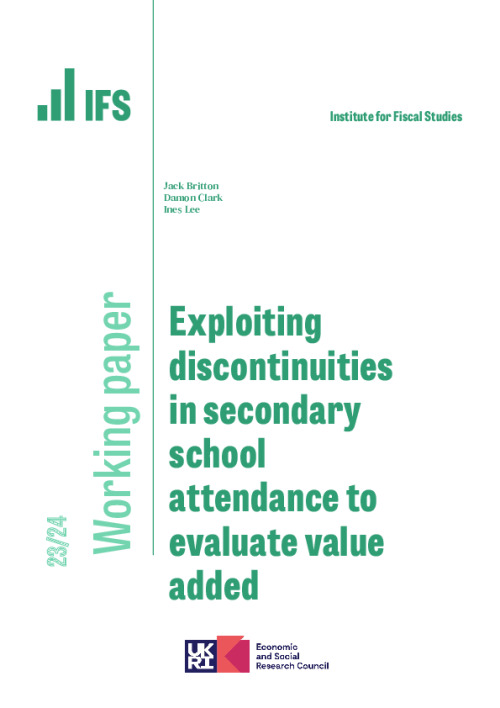We use a new empirical strategy to test various measures of school effectiveness in England. Our approach exploits discontinuities in attendance probabilities that occur at unpredictable distance cutoffs used as tiebreakers in admissions processes for oversubscribed schools. We show that raw, unadjusted test score outcomes of schools are biased estimators of school effectiveness due to sorting of certain types of students into certain types of schools. Controlling for basic background characteristics (but not prior attainment) does not change this result. On the other hand, we cannot reject the hypothesis that simple value added models which adjust school test scores for difference in the prior attainment of their intake produce unbiased effectiveness estimates. This includes "Progress 8", the measure of value added that has been used in England since 2016, suggesting the measure accurately captures the true effect of schools on pupils’ GCSE attainment. Adding additional background controls does not invalidate the estimates, but it does not improve precision either. Finally, we combine our unbiased estimator of effectiveness with data on secondary school applications to show that parents often do not put the most effective school in their local area down as their first choice school. This is particularly true for parents from poorer households, suggesting SES gaps in access to good schools could be narrowed through changes to school application patterns.











